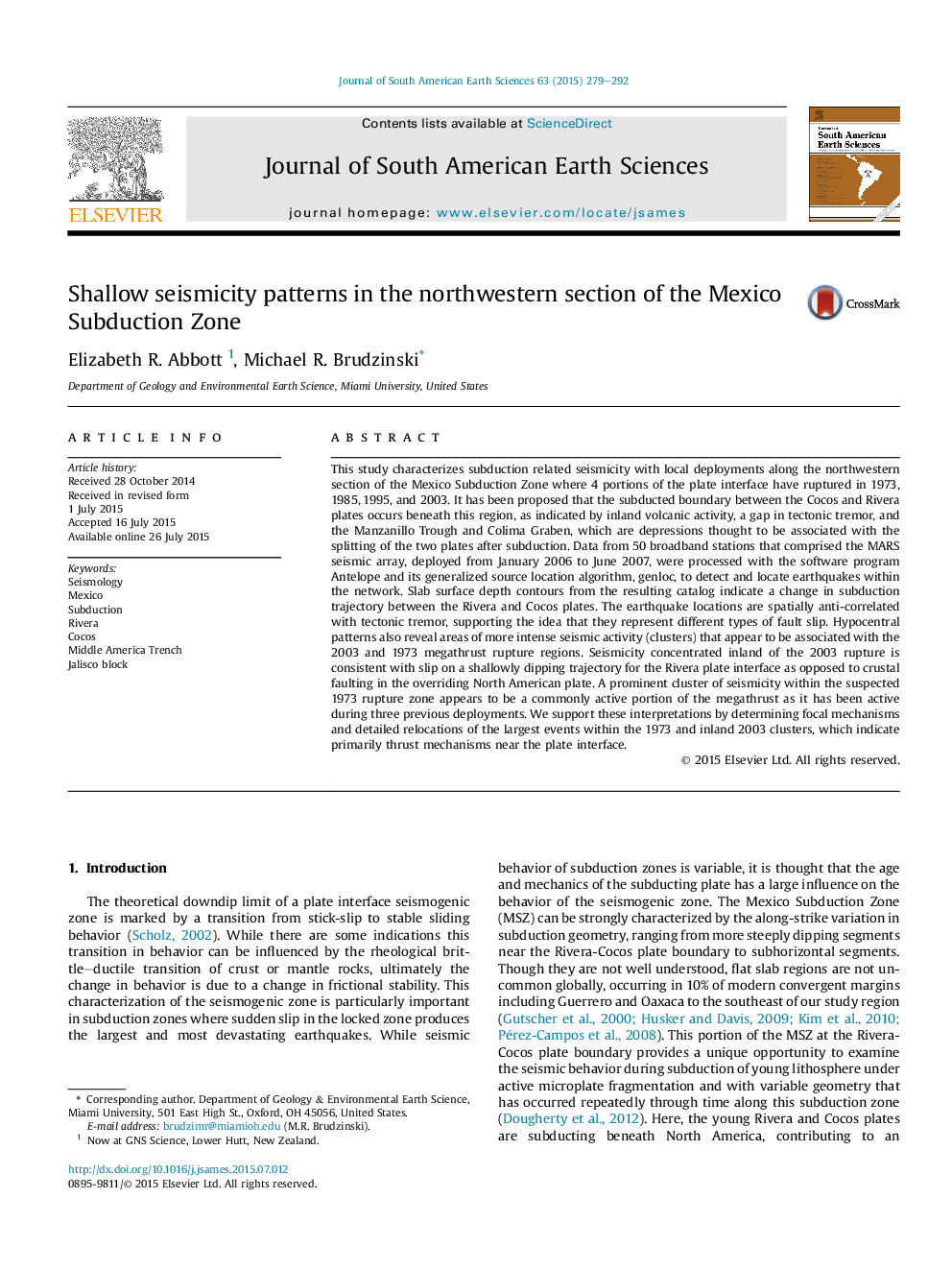| Article ID | Journal | Published Year | Pages | File Type |
|---|---|---|---|---|
| 4682166 | Journal of South American Earth Sciences | 2015 | 14 Pages |
•This study characterizes subduction related seismicity using the MARS deployment.•Thrust mechanisms inland of the 2003 rupture zone suggest a shallow Rivera plate.•Slab surface contours outline the inland extent of the shallow Rivera plate.•Seismicity is spatially anti-correlated with non-volcanic tremor.•Interplate seismicity in the proposed 1973 rupture zone appears to be persistent.
This study characterizes subduction related seismicity with local deployments along the northwestern section of the Mexico Subduction Zone where 4 portions of the plate interface have ruptured in 1973, 1985, 1995, and 2003. It has been proposed that the subducted boundary between the Cocos and Rivera plates occurs beneath this region, as indicated by inland volcanic activity, a gap in tectonic tremor, and the Manzanillo Trough and Colima Graben, which are depressions thought to be associated with the splitting of the two plates after subduction. Data from 50 broadband stations that comprised the MARS seismic array, deployed from January 2006 to June 2007, were processed with the software program Antelope and its generalized source location algorithm, genloc, to detect and locate earthquakes within the network. Slab surface depth contours from the resulting catalog indicate a change in subduction trajectory between the Rivera and Cocos plates. The earthquake locations are spatially anti-correlated with tectonic tremor, supporting the idea that they represent different types of fault slip. Hypocentral patterns also reveal areas of more intense seismic activity (clusters) that appear to be associated with the 2003 and 1973 megathrust rupture regions. Seismicity concentrated inland of the 2003 rupture is consistent with slip on a shallowly dipping trajectory for the Rivera plate interface as opposed to crustal faulting in the overriding North American plate. A prominent cluster of seismicity within the suspected 1973 rupture zone appears to be a commonly active portion of the megathrust as it has been active during three previous deployments. We support these interpretations by determining focal mechanisms and detailed relocations of the largest events within the 1973 and inland 2003 clusters, which indicate primarily thrust mechanisms near the plate interface.
Graphical abstractFigure optionsDownload full-size imageDownload as PowerPoint slide
